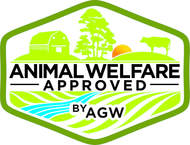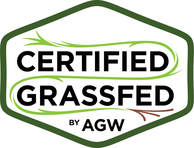|
In honor of Earth Day today, and knowing how controversial and misunderstood this topic can be, we figured we write about it from our own knowledge, research, and experience.
When we bought the farm 9 years ago and decided to farm it ourselves- we were told beef cattle was the "easiest", given the fact that we didn't live at the farm. Vegetables are way too labor intensive, dairy needs twice daily milking, chickens need many eyes from predators, so after talking to a few farmer friends and mentors, beef cattle was the best fit for us. But there was also another reason. These farmers- advocates of grass fed- insisted that this was the best option for improving our soil (it was depleted from continuous row crops) and if we really wanted to be environmentally friendly, we needed animals in the fields. I couldn't believe my ears! Being in nutrition and getting bombarded by vegan propaganda that says it is not only wrong to kill an animal to eat it but that this is destroying the planet, we went on a little research of our own to make sure our farming mentors were right. Of course they were right. After much study from Joel Salatin, Judith Shwartz and her fabulous book "Cows Save the Planet", Nicolette Hahn (a longtime vegetarian turned rancher) on "Defending Beef: The Case for Sustainable Meat production", Allan Savory, Wendell Berry, and many others, we were convinced. Let me explain. For decades the public has long been led to believe that livestock, especially cattle, erode soils, pollute air and water, damage riparian areas, and decimate wildlife populations. But is it so clear cut?? Not so, as Allan Savory explains in his TED Talk, “We were once just as certain that the world was flat. We were wrong then, and we are wrong again.” You may think it unlikely that these pastured grazers are the soil saviors we need, but it’s true. Through holistic management and planned grazing, cows can help rebuild soil and restore land to its rightful state; improving carbon sequestration, natural water cycles, and soil fertility and nutrient density. Small Grass-fed Farms vs. Factory Farms Properly managed livestock play an essential role in maintaining grassland ecosystems by functioning as surrogates for herds of wild ruminants that once covered the globe. Hahn Niman argues that dispersed, grass-fed, small-scale farms can and should become the basis for American food production, replacing the factory farms that harm animals and the environment. We need to take a more holistic perspective that puts the soil and its rich microbial life at the heart of our dynamic global ecosystem. Sequestering carbon into the soil holds huge potential as a means of mitigating climate change and increasing soil fertility, and some bold statements have been made about it. It’s important to remember that healthy soil holds far more carbon than unhealthy soil. In the last century, half of most of the world’s soils have been depleted of carbon by 50% to 70%. It’s not holding on to nearly as much carbon as it had and a lot of that has to do with land management. Soil is a living thing. A lot of its living organisms are killed off by all the things we’ve been pouring on the land as part of our industrial agricultural system to make it "more productive"– nitrogen fertilizer, herbicides and pesticides, and fungicides – that in the long term, don't do much for our soil, and that’s beginning to show in decreasing productivity. What we need is more small grazing farms, and more healthy soil. The Role of Cows in Building and Healing the Soil This is where cows come in. Building soil is a top down activity where the myriad microbial life around a plant’s root system in healthy soil feeds the subsoil farther down turning it into topsoil. Cows and livestock can speed up this transformation, if well managed, because they are key contributors to the microbial world (think of all that poop!.). Through systems like Allan Savory's holistic management, What is Holistic Management? When moved in large herds according to a planned (yet, observational at times) schedule, livestock will nibble plants just enough to stimulate plant and root growth, trample the ground in a way that breaks apart caked earth to allow dormant seeds to germinate and water to seep in, and leave dung and urine to fertilize the soil with organic matter (aka carbon). You move them to the next pasture and that land rests and rebuilds. The result is a wide variety of grasses and other deep-rooted plants and rich, aerated soil that acts like a great big sponge so as to minimize runoff and erosion. There are a number of other innovative land management techniques that focus on caring for the content of the soil and working to preserve its innate health, and this is what we practice at Starry Nights Farm. Climate change and global warming are topics we hear in an almost daily basis. Some of us feel it more than others. Fires, hurricanes, droughts, heavy storms, floods, and other weather events are changing our planet. The hard truth is, we talk about "saving the planet", but in my opinion, Earth is resilient- it will adjust and continue on. Humanity on the other hand, is at peril. We can no longer keep up with it and need to reverse our damaging actions. At Starry Nights Farm, we are privileged and proud to be working towards saving our future generations. Caring for the land that feeds and house us is part of our mission, and we are grateful to YOU for caring, supporting us, and being a part of this mission. Happy Earth Day!
0 Comments
|
AuthorMarisa usually writes about nutrition, grass fed beef, organic agriculture, as well as sharing delicious recipes; Paul writes about farm work- sharing his stories and experiences, and most times... we both collaborate on the stories! Archives
March 2024
Categories
All
|
 RSS Feed
RSS Feed


